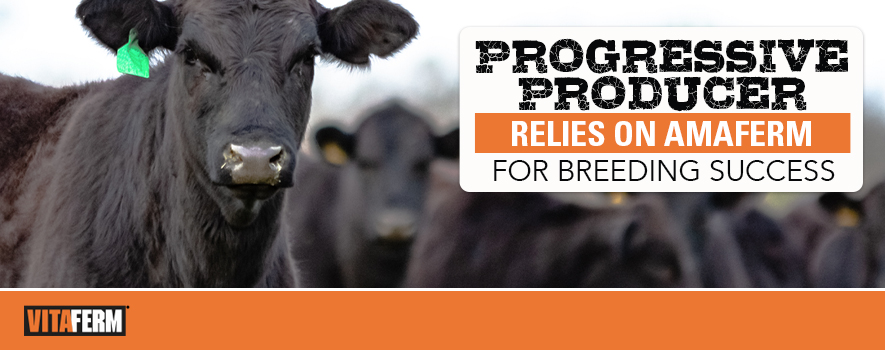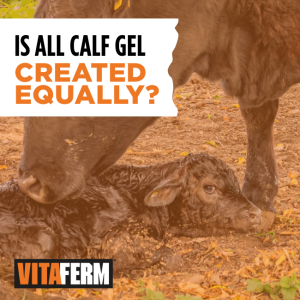
Getting cows bred and keeping them bred can be challenging. Using advanced reproductive technologies adds another layer of challenges to your operation. And doing all of these things in the rolling hills of Southern Kentucky, where your main forage source is endophyte-infected fescue can be a real test.
However, long-time cattle producer Eddie Burks, owner of Burks Cattle at Smiths Grove, Kentucky, knows that proper nutrition plays a big part in his daily herd management. He’s been supplementing his herd of registered Angus and Hereford cows with VitaFerm® Concept•Aid® for more than 25 years.
“I wouldn’t breed cows without Concept•Aid. I believe that much in it as far as getting them bred. We try to be 100% A.I. or embryo transfer, and there is no doubt to me it makes our program successful,” Burks said.
VitaFerm Concept•Aid is a free-choice vitamin and mineral supplement designed specifically for breeding. It is intended to be fed 60 days pre-calving to 60 days post calving. It is especially beneficial in A.I. and E.T. programs. Concept•Aid contains 2.5 times the NRC for quicker impact, high levels Vitamin E for reproductive tract repair, organic trace minerals for more stability and higher bioavailability, and Amaferm®, is a prebiotic designed to enhance digestibility by amplifying the nutrient supply for maximum performance. It is research-proven to increase intake, digestion and absorption.
Concept•Aid makes an ideal breeding mineral, insuring the reproductive health of the cow. With organic trace minerals and the Amaferm advantage, it is a win for producers across all breeds and geographies.
“We are believers in the product, especially the Concept•Aid. We see a difference in CL quality; we very seldom have a recip that gets turned down. I believe that nutrition has a lot to do with it,” Burks said
In addition to getting their cows bred, keeping them bred on the Kentucky tall fescue can be trying. That is where the Amaferm offers a benefit in increasing intake, digestion and absorption, keeping those cattle fleshier and getting the most efficient use of the forages available to them, therefore keeping them in better body condition.
“The value of the Amaferm is one of those things you can’t hardly measure, but there is enough data behind it that you’ve got to think it’s worthwhile from a conversion standpoint, especially where we’re on highly infected fescue. Anything we can do to compensate for some of that is highly worthwhile,” Burks said.
Burks is on the second year of turning his cows on the VitaFerm HEAT®, designed especially for grazing anytime the temperatures reach above 70 degrees or when grazing fescue, like he does. He claims as long as his cows are getting their Amaferm, he knows they are getting the best nutrition they can receive.
A new product, VitaFerm Concept•Aid 5/S HEAT is now available to producers like Burks who know the value of Amaferm and appreciate the benefits of the HEAT package of getting their cows bred and keeping them bred while fighting heat stress and fescue toxicity.
When getting cows bred and keeping them bred means more live calves at birth, that’s not coincidence. That’s the science behind the Amaferm advantage.


